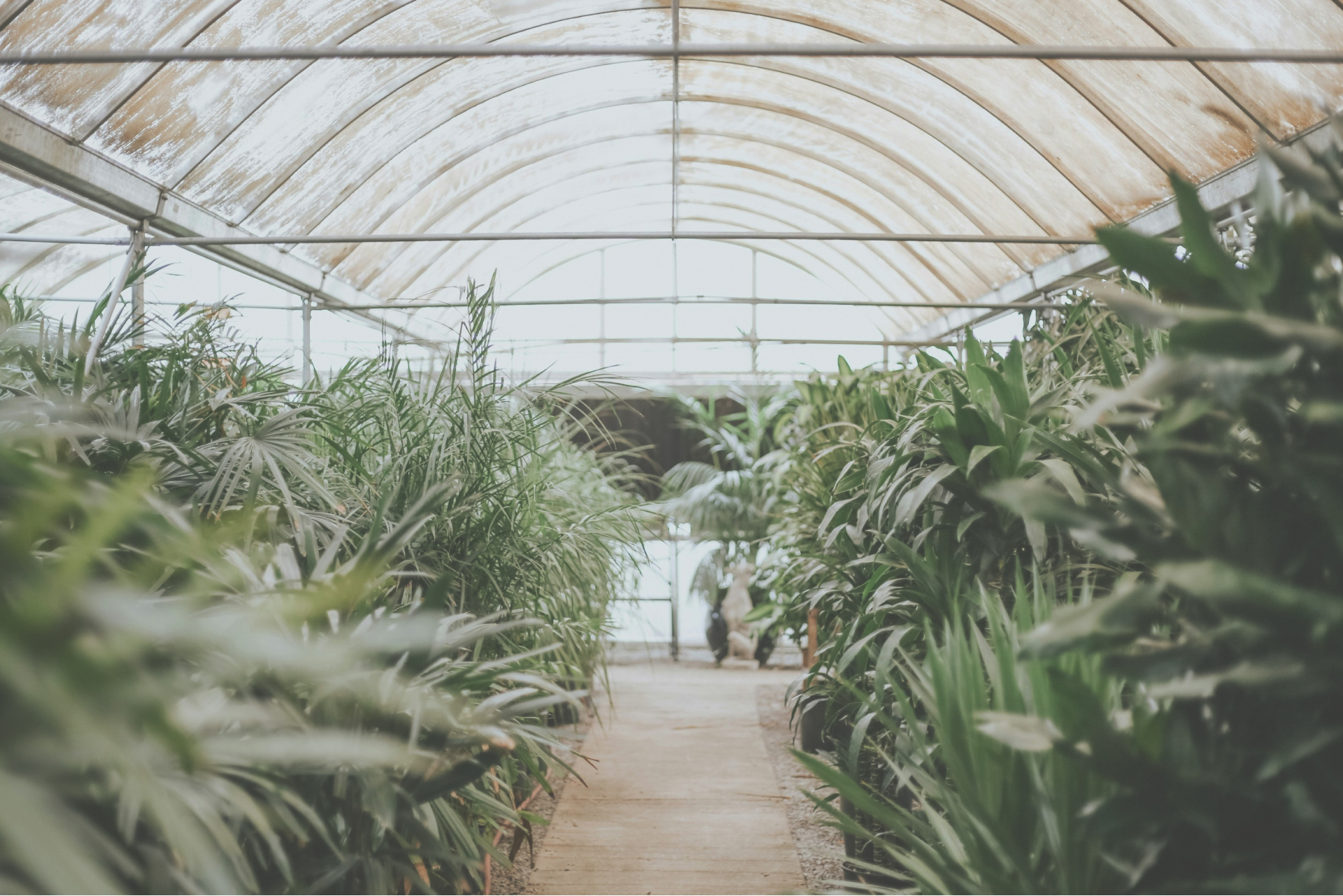Power, Control and Discretion: The Winning Trio in an extraction system
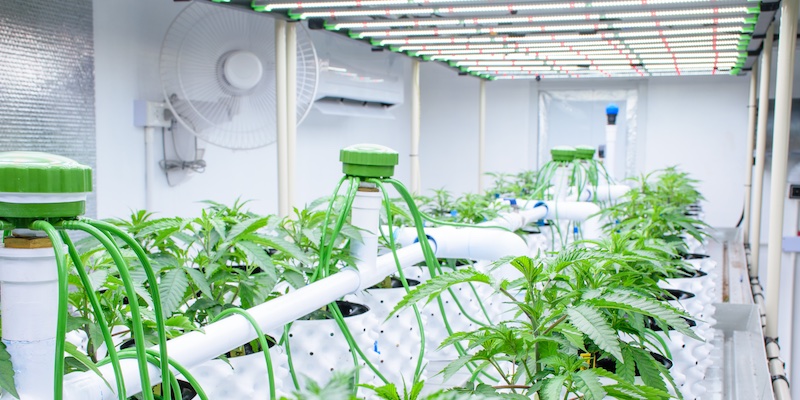
The success of an indoor cannabis grow depends on multiple interconnected factors, but few are as decisive as a properly sized extraction system. It’s not simply about moving air; it’s the beating heart that keeps the artificial ecosystem we’ve created for our plants alive. An efficient extraction system combines three key elements: the power needed to refresh the air, the control of odours that could compromise our privacy, and the discretion to keep the grow completely imperceptible to the ear.
To understand the importance of a proper extraction system, it’s essential to know what’s really happening inside a grow space. Cannabis plants, like all vegetation, are constantly exchanging gases: during daylight hours they absorb carbon dioxide and produce oxygen, while at night the process is reversed. Without constant air renewal, this exchange is disrupted, creating a stale environment that can seriously limit plant development.
Hot air, which is lighter than cold air, tends to accumulate at the top of the grow space, carrying with it excess moisture from plant transpiration. This combination of heat and stagnant humidity creates the perfect conditions for mould and pests to thrive, turning what should be a sanctuary for our plants into a hostile environment.
A well-sized extractor removes this stale air and allows fresh air, rich in CO₂, to flow in, keeping environmental conditions within optimal parameters. Finally, it creates negative pressure, a key phenomenon that ensures all air — and any aromas it carries — is forced through the carbon filter before being expelled, preventing any leaks.
Calculating the exact power of an extractor
Calculating the required power for an extraction system goes far beyond applying a simple formula. While the basic rule of thumb is to renew the entire grow volume between 30 and 60 times per hour, the reality is far more complex and depends on the specific conditions of each setup.
To obtain the base airflow, first calculate the volume of your space by multiplying length by width by height in metres. Once you have the cubic metres, multiply that figure by 50 — a middle value that ensures proper air renewal — to determine the cubic metres per hour needed. However, this is just the starting point.
The most important correction factor is the resistance added by carbon filters. An odour filter can reduce the effective airflow of your extractor by 20% to 30%, so the base calculation should be multiplied by 1.25 (25%) to compensate for this loss. But the losses don’t stop there: every bend in the ducting, every extra metre of tubing, and every accessory in the circuit will further reduce performance.
For example, to calculate the exact power needed for a standard Pure Tent (1.2 m x 1.2 m x 2.0 m, volume of 2.88 m³), use the following formula:
Base airflow (m³/h) = Tent volume (m³) × Air changes per hour
Using the midpoint figure of 50 air changes per hour (optimal for most grows):
Base airflow = 2.88 × 50 = 144 m³/h
However, once a carbon filter is added for odour control, you must correct that airflow for the loss caused by the filter (approximately 25%):
Corrected airflow = Base airflow × 1.25 = 144 × 1.25 = 180 m³/h
Therefore, the ideal extractor for this tent should have a capacity of at least 180 m³/h to work properly with a carbon filter and maintain negative pressure.
Keep in mind that every bend, every extra metre of ducting and every accessory will add further performance losses, as duct length and turns increase resistance to airflow. This is why experts often suggest multiplying by around 1.3 when there are long runs or multiple bends, which equates to adding roughly 33% extra airflow to the final required figure.
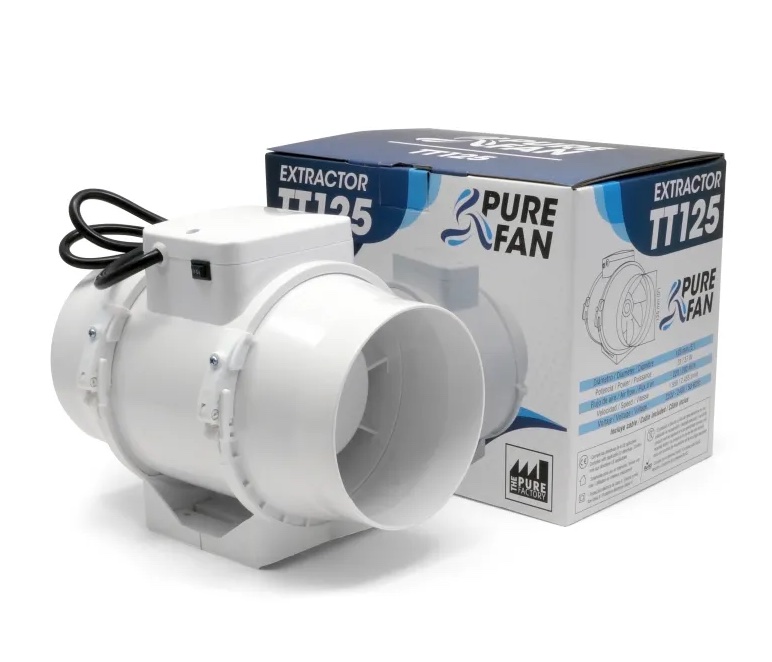
Negative pressure: the principle behind odour control
To guarantee absolute odour control, it’s essential to create and maintain negative pressure inside your grow space. This is achieved when the extractor pulls out more air than can naturally enter through passive intake openings. This creates a slight vacuum, ensuring that any external air is drawn into the grow space, while no air carrying cannabis odours can escape except through the controlled filtration system.
You can easily observe this principle in action: in a properly configured grow tent, the fabric walls will bow slightly inward when the system is running. If, on the other hand, the walls bulge outward, it indicates positive pressure — a situation you must avoid if you want total control over odours.
To achieve effective negative pressure, the intake should be passive (simple openings without an intake fan). If you use active intake, the intake fan must be significantly less powerful than the extractor. A typical setup might be an extractor rated at 400 m³/h paired with an intake fan rated at 150 m³/h, ensuring the necessary negative pressure is maintained.
The carbon filter: the ultimate barrier against odours
The terpenes produced by cannabis plants during flowering can be detected from long distances, turning an aroma that’s delightful to us into a potential source of trouble with neighbours or unwanted visitors. This is why odour control is one of the most critical aspects of any home grow.
Activated carbon filters work through a process called adsorption, where aromatic molecules adhere to the porous surface of the carbon. The effectiveness of this process depends on several factors: the quality of the carbon used, the contact time between the air and the filter, and the correct balance between the extractor’s airflow and the filter’s capacity.
A filter such as the Pure Filter uses RC412 Australian activated carbon, renowned for its exceptional porosity and adsorption capacity. This type of carbon, steam-activated at high temperatures, provides a contact surface of over 1,000 square metres per gram, offering superior filtration capacity compared to conventional carbons.
The key is to choose a filter with a slightly higher capacity than your extractor. For instance, if your extractor moves 300 m³/h, you should select a filter rated for 350–400 m³/h.
Placement is also crucial. Installing the filter inside the grow space, connected directly to the extractor, allows the air to be filtered before it exits to the outside. This setup, known as a pull configuration, is more efficient than placing the filter outside the grow, as the full force of the extractor is used to draw air through the carbon.
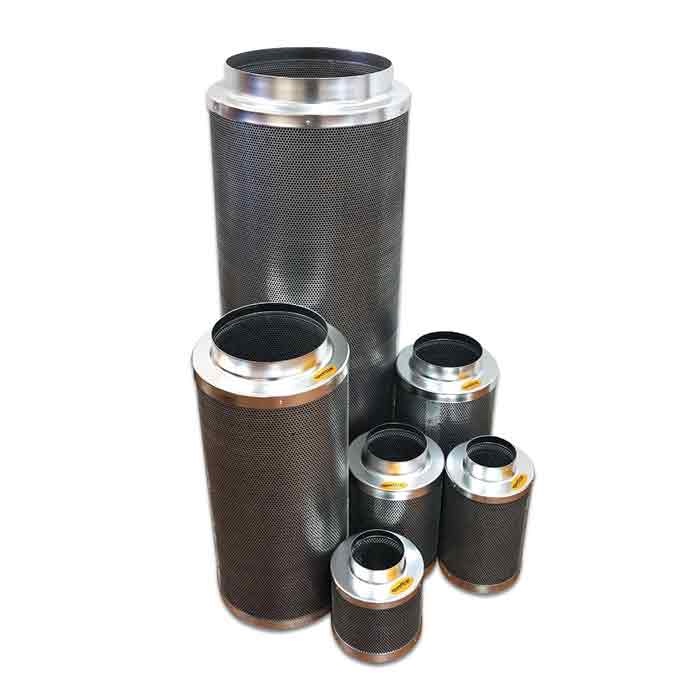
The importance of soundproofing for discretion
A truly discreet grow must not only be invisible and odour-free, but also silent. Extractors, especially more powerful models, can generate noise levels that either attract unwanted attention or simply become annoying in daily life.
Soundproofing an extraction system works on multiple levels. The first type of noise to control is mechanical noise, produced by the motor and the extractor’s blades. High-quality centrifugal extractors generate less noise than axial ones, but even the best can benefit from additional soundproofing measures.
Soundproofed extractor boxes, such as The Pure Factory’s Pure Foam units, are the most effective solution for mechanical noise. Built with sound-absorbing materials like EPP (expanded polypropylene), these boxes completely encase the extractor, drastically reducing both noise and vibrations. EPP material is not only highly effective at absorbing sound, but it’s also lightweight, waterproof, and durable, ensuring longevity without compromising performance.
The second type of noise to address is aerodynamic noise — the whistling sound produced by air moving through ducts and exiting outside. This noise increases when too much air is forced through undersized ducts or when air exits directly without a silencer.
Sono+ soundproof ducts solve much of this problem. These ducts feature a double wall with insulating material and micro-perforations that significantly reduce airflow noise. For more demanding situations, flexible silencers installed at the outlet can reduce noise by an additional 15–28 decibels, turning a potentially noisy system into a virtually silent one.
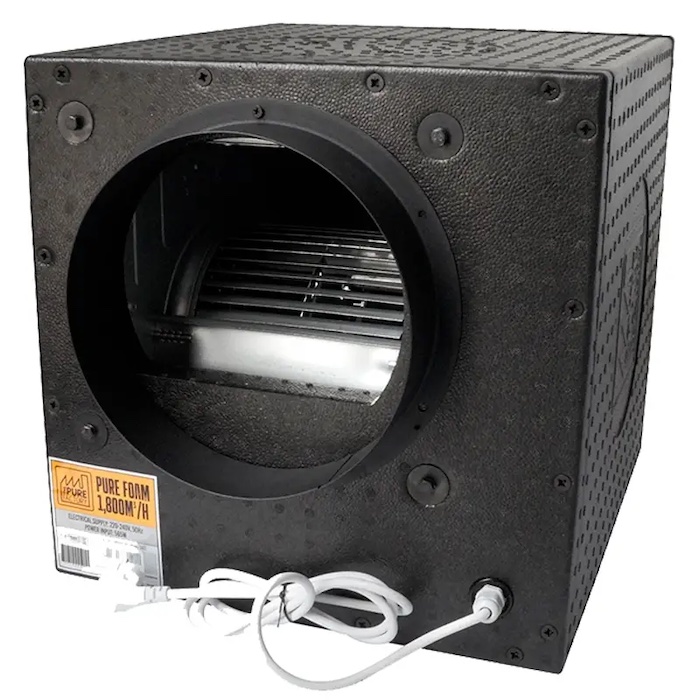
Other key components of a complete extraction system
A professional extraction system integrates multiple components working in harmony. The extractor is the heart of the system, but its effectiveness depends on every other element supporting it.
The layout of the space also plays a major role in calculations. A grow using LED Lighting will require less extraction than one with high-powered HPS lamps, which generate considerably more heat. Ceiling height is also crucial: taller spaces require more air renewal to prevent thermal stratification.
The choice of duct diameter is essential for minimising pressure losses and noise. Ducts that are too narrow for the airflow they must handle will generate turbulence, noise, and efficiency loss. Airspeed inside the ducts should not exceed 10–12 metres per second to avoid acoustic problems.
Speed controllers add versatility to the system, allowing you to adjust power according to the specific needs at any given time. During vegetative growth, when plants produce less heat and odour, you can reduce the speed to save energy and minimise noise. During flowering, when odour control is critical, you can increase the power to ensure optimal filtration.
The relative humidity of the external air also directly affects system performance. In very humid climates, you may need to supplement extraction with active dehumidification to maintain optimal levels inside the grow space. Conversely, in very dry environments, you may need to add humidity to prevent plant stress.
As you can see, at The Pure Factory, we don’t just offer high-performance products — we also provide the knowledge needed to create professional, reliable setups. Today’s technology allows us to design extraction systems that combine industrial power with domestic quietness, commercial effectiveness with residential discretion. By applying the principles in this guide, you stop being just a buyer of equipment and become the engineer of your own cannabis Cultivation success.
